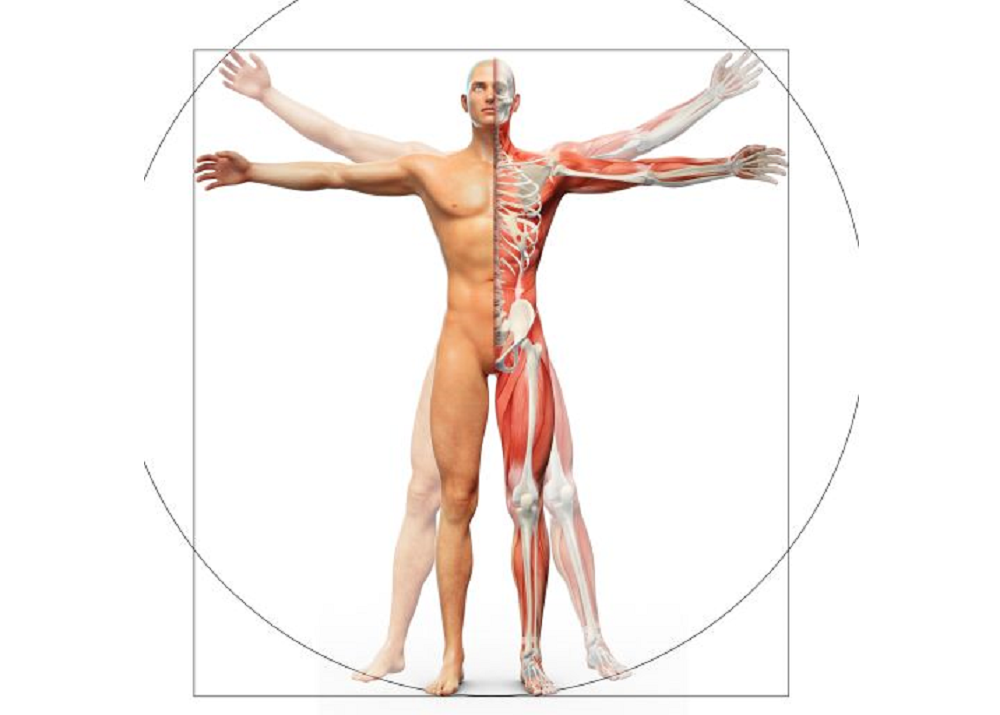Exercise Anatomy
Triceps Pushdown
Sculpt strong and defined triceps with the Triceps Push-Down—an exercise designed for targeted muscle engagement. This simple yet effective movement isolates the triceps, fostering both strength and tone. Add the Triceps Push-Down to your routine for a quick and impactful way to enhance your arm aesthetics and build upper body strength.

Major Muscles and Actions Involved
The Triceps Push-Down is a dynamic exercise that primarily involves the joint action of elbow extension. As you perform this movement, the elbow joint extends, emphasizing the activation of the triceps brachii muscles.
Engaging in Triceps Push-Downs targets the triceps brachii, the three-headed muscle located at the back of the upper arm. This exercise isolates the triceps, focusing on their role in extending the forearm. Additionally, the anconeus, a smaller muscle adjacent to the triceps, is involved in supporting the movement during the Triceps Push-Down.
The simplicity and targeted nature of this exercise make it an efficient choice for isolating and strengthening the triceps muscles. The Triceps Push-Down is a staple in arm workouts, contributing to the development of strong and well-defined triceps.
Exercise Execution
To perform the Triceps Push-Down, begin by approaching a cable machine and attaching a straight or angled bar to the high pulley. Stand facing the machine with your feet shoulder-width apart, maintaining a slight bend in your knees.
Grip:
Grasp the bar with an overhand grip, ensuring your hands are shoulder-width apart. Keep your wrists in a neutral position.
Body Position:
Stand upright, maintaining a straight and tall posture. Engage your core to stabilize your body throughout the exercise. Position yourself at a distance where you can fully extend your arms without leaning forward.
Movement:
Initiate the movement by hinging at the elbows and bringing the bar down towards your thighs. Keep your upper arms close to your torso and ensure that your elbows remain stationary during the descent.
Extension:
Fully extend your elbows, pushing the bar down until your arms are straight. Focus on contracting your triceps at the bottom of the movement. Maintain control and avoid using momentum to ensure targeted engagement of the triceps.
Return:
In a controlled manner, allow the bar to rise back up, bending your elbows. Keep the movement smooth and deliberate throughout the range of motion.
Breathing:
Inhale as you bring the bar down, and exhale as you push it back up. Establishing a rhythmic breathing pattern can help you maintain control and focus during the exercise.
Remember, the key is to isolate the triceps during the push-down movement. Avoid excessive body movement, and ensure that the effort is primarily coming from the extension of the elbows. Adjust the weight on the cable machine according to your strength level, focusing on maintaining proper form throughout the exercise.

Safety First
For the Triceps Push-Down, the most important safety consideration is maintaining proper elbow and wrist alignment to avoid joint strain. Keep your elbows close to your sides throughout the entire movement, ensuring they remain stationary and don’t flare outward. Use a controlled motion as you push the bar or rope attachment down, focusing on engaging the triceps without using momentum or your shoulders to assist. Avoid locking out your elbows at the bottom of the movement, as this can place unnecessary stress on the joints. Additionally, keep your wrists in a neutral position, avoiding excessive bending to prevent strain. Start with manageable weight to maintain good form, ensuring smooth, controlled repetitions for optimal safety.

Sports Uses
The Triceps Push-Down, renowned for its ability to isolate and strengthen the triceps, finds direct benefits in various sports where upper body strength and arm functionality are crucial.
In the world of weightlifting, specifically in the bench press, the Triceps Push-Down becomes a valuable accessory exercise. By reinforcing triceps strength, it aids weightlifters in the lockout phase of the bench press, contributing to improved stability and power.
For combat sports like boxing and mixed martial arts, where powerful punches are paramount, the Triceps Push-Down serves as a strategic addition to training. Strengthening the triceps muscles aids fighters in delivering forceful blows, enhancing the effectiveness of their striking capabilities in the ring or cage.
In football, particularly for positions like offensive and defensive linemen, where pushing opponents is a fundamental aspect, the Triceps Push-Down becomes a key exercise. The enhanced triceps strength derived from this movement supports linemen in effectively engaging and disengaging from their opponents during plays.
Gymnasts, performing intricate routines on rings and parallel bars, benefit from the Triceps Push-Down to fortify their upper body strength. This exercise contributes to the development of strong triceps, essential for maneuvers that involve pushing and supporting body weight.
Moreover, in activities like rock climbing, where upper body endurance and strength are vital, the Triceps Push-Down can be a valuable addition to training routines. It aids climbers in developing the triceps strength necessary for pushing and maintaining control during ascents.
In summary, the Triceps Push-Down offers direct benefits in sports that demand upper body strength, pushing power, and arm functionality. Its ability to isolate and strengthen the triceps makes it a valuable tool for athletes across various disciplines, contributing to improved athletic performance and functionality.
Exercise Tips
- Technique:
Prioritize proper technique during Triceps Push-Downs by keeping your upper arms stationary and close to your torso throughout the movement. Ensure a full range of motion, allowing your elbows to fully extend and your triceps to engage at the bottom of the movement. Avoid leaning forward or using excessive body movement. - Range of Motion:
Emphasize a complete range of motion by fully extending your elbows during the downward phase of the push-down. This ensures optimal activation of the triceps. Conversely, avoid shortening the range, as it may limit the effectiveness of the exercise. Aim for a smooth and controlled movement. - Amount of Weight Used:
Begin with a moderate weight that allows you to maintain proper form and complete the desired number of repetitions. Gradually increase the weight as your strength improves. However, prioritize control and muscle engagement over lifting excessively heavy weights, especially if it compromises your form. - Variations:
Explore different variations of Triceps Push-Downs to target the triceps from various angles. Utilize different attachments such as ropes, V-bars, or straight bars to add variety to your triceps training. Each variation places a slightly different emphasis on the triceps, contributing to overall development. - Breathing:
Establish a consistent breathing pattern to support your movements during Triceps Push-Downs. Inhale as you bring the bar down, and exhale forcefully as you push it back up. This rhythmic breathing not only enhances stability but also contributes to overall efficiency and focus during the exercise.
Triceps Push-down vs 45-Degree Triceps Extension
1. Muscles
Targeted:Triceps Pushdown: Primarily targets all three heads of the triceps.
45-Degree Triceps Extension: Also focuses on all three triceps heads but places additional emphasis onthe long head.
2. Exercise Type:
Triceps Pushdown: Isolation exercise that involves extending the elbow joint against resistance.
45-Degree Triceps Extension: Compound exercise that involves both shoulder and elbow joint movement.
3. Equipment:
Triceps Pushdown: Typically performed using a cable machine with a straight bar, V-bar, or rope attachment.
45-Degree Triceps Extension: Often done with a dumbbell or an EZ-curl bar on a decline bench set at a 45-degree angle.
4. Range of Motion:
Triceps Pushdown: Involves pushing the bar or cable down, fully extending the elbow joint.
45-Degree Triceps Extension: Involves lowering the weight behind the head and extending the elbow joint on the incline bench.
5. Body Position:
Triceps Pushdown: Usually performed standing, with a slight lean forward at the waist.
45-Degree Triceps Extension: Performed on a decline bench set at a 45-degree angle, with the upperarms positioned on the bench.
6. Stress on Elbows:
Triceps Pushdown: Generally places less stress on the elbows.
45-Degree Triceps Extension: May put more stress on the elbows due to the extended range of motion and position
7. Application:
Triceps Pushdown: Commonly used in triceps-focused workouts for overall triceps development.
45-Degree Triceps Extension: Effective for targeting the long head of the triceps and providing variety in triceps training.
In summary, both exercises contribute to triceps development, but the triceps pushdown is a classic isolation exercise, while the 45-degree triceps extension combines compound movements with a specific focus on the long head of the triceps. Including both in your workout routine can offer a well-rounded approach to triceps training.

Want To Learn More?
Try our premium ebook, Exercise Anatomy and Biomechanics: Ultimate Guide.
Satisfaction guaranteed.
